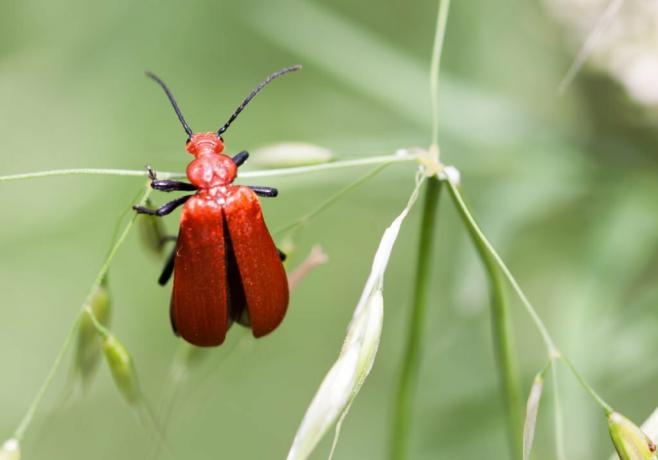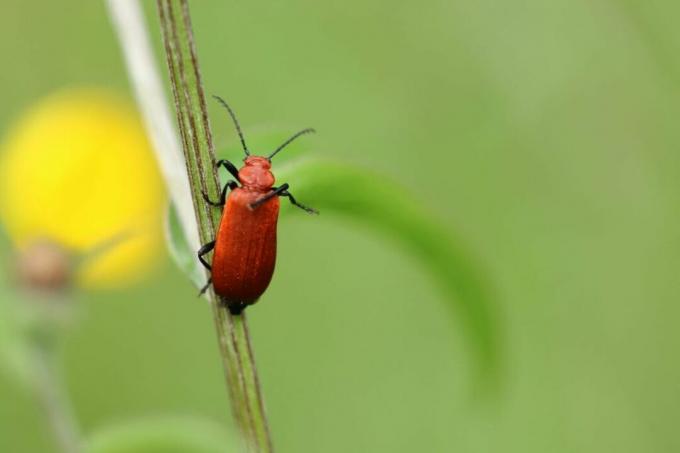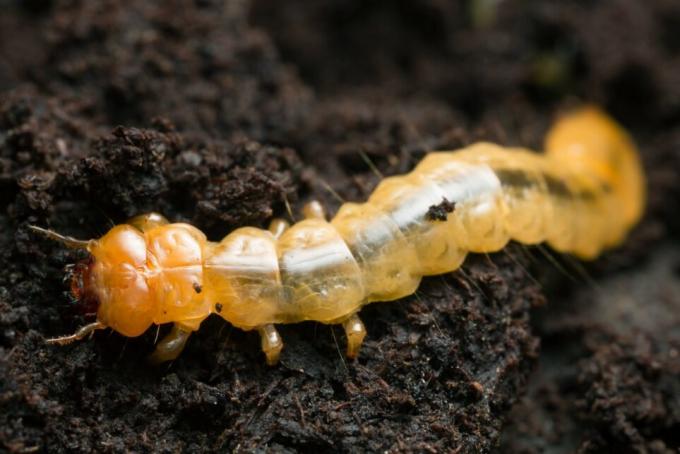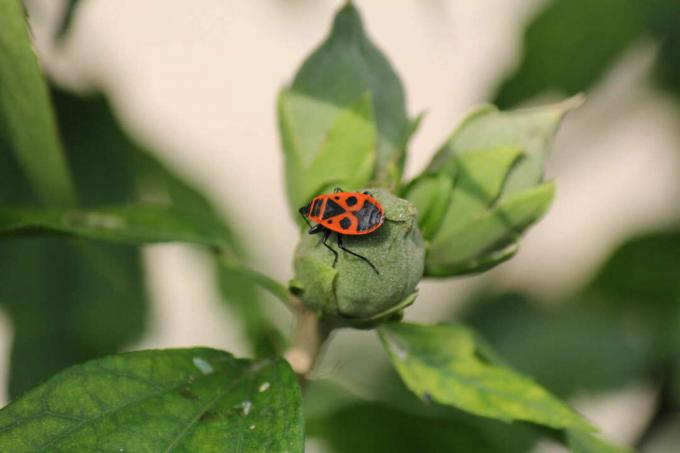Because of their bright red color, they look dangerous. But are fire beetles really dangerous or poisonous and do they have to be fought?
Warning colors such as red or yellow play an important role in the animal world. Many poisonous animals, such as wasps or colorful poison dart frogs, clearly signal with their colors: I am poisonous and dangerous, so leave me alone! For this reason, predators often avoid animals with bright colors. On the other hand, there are also animal species that have taken on the appearance of dangerous animals and are themselves completely harmless. What about the family of the red fire beetles? If red is a warning color, is the fire beetle dangerous too?
contents
- Fire beetle: a short profile
- Fire beetle: dangerous and poisonous?
- Fire beetles: control necessary?
- Fire bug with black dots: risk of confusion with the fire bug
Fire beetle: a short profile
The fire beetle family comprises around 140 species worldwide. In Germany, however, there are only three types. The most important and most common representative is the scarlet fire beetle (
Pyrochroa coccinea). The flat and elongated body can be up to two cm long. Almost the entire upper body immediately catches the eye with its strong scarlet color, only the head is an exception and is completely black. The fire beetles are particularly common in forests and on forest edges on blossoms or dead wood. This is due to their eating habits, because the adult beetles eat sweet sap or honeydew from aphids.
The fire beetles are often found near dead wood, as this is where their larvae hide under the bark. The larvae appear flattened, but this is their normal body shape. Mushrooms and other insects such as the bark beetle larva serve as food for the beetle larvae. After a development time of two to three years, the larvae pupate under the tree bark into an adult fire beetle. The other two fire beetle species are usually not that common in Germany. However, knowing about them definitely can't hurt. We have put together the most important information for you:
- Red-headed fire beetle (Pyrochroa serraticornis): Outwardly, this fire beetle is almost identical to the scarlet fire beetle. At 10-14 mm, however, it is slightly smaller than its big brother. But the better differentiator is the head. As the name of the red-headed fire beetle suggests, unlike the scarlet fire beetle, it has a red head.
- Orange fire beetle (Schizotus pectinicornis): Due to their small size of 8 - 9 mm, the beetles are sometimes also referred to as small fire beetles. Overall, the orange fire beetle can be clearly distinguished from the other two fire beetle species due to its small size and light orange upper body.

Fire beetle: dangerous and poisonous?
All three species of fire beetles are completely harmless and not dangerous. Even if they wanted to, the fire beetles would not be able to injure human skin with their mouthparts. Nothing is known of any toxic effects on humans either. As already mentioned in the introduction, not every animal with a warning color has to be dangerous at the same time. In addition to the adult beetles, the larvae are also harmless. Only conspecifics have to be careful, as the larvae are sometimes prone to cannibalism.
Fire beetles: control necessary?
Control only makes sense if the fire beetle causes specific damage, for example to crops. If one looks at the way of life of the fire beetle, it quickly becomes clear that the adult beetles cannot cause any damage. Because the scarlet fire beetle and the other two species only consume honeydew and other vegetable juices as food. In order to get to the plant sap, the plants are not damaged, which is why there is no need to fight it.

And what about the larvae? The fire beetle larvae do not eat the wood in which they live. They feed exclusively on the insect larvae and fungi that live in them. Since wood-destroying larvae such as the bark beetle larvae are sometimes on their menu, the larvae could even be described as beneficial insects. Combating the fire beetle is therefore not recommended as a whole, as both larva and beetles are completely harmless to your plants and you.
Fire bug with black dots: risk of confusion with the fire bug
Unfortunately, it often happens that the fire bug is confused with the much more common fire bug. The distinction between the two insects is child's play. In contrast to the fire beetles, the 6.5 to 12 mm large fire bugs have an oval body shape and are not capable of flight. In addition, the fire bugs usually appear in droves and are real herbivores. They particularly like to suckle the fallen seeds of linden trees and mallow plants such as hibiscus. In principle, however, a quick look at the upper body is sufficient to distinguish. As soon as striking, black and red drawings can be seen, it must be about the fire bug, because there are no patterns in the fire beetles.

More about Fire bugs learn from this article.
You can find more inspiration on the topic of "animals in the garden" on our Pinterest page:



